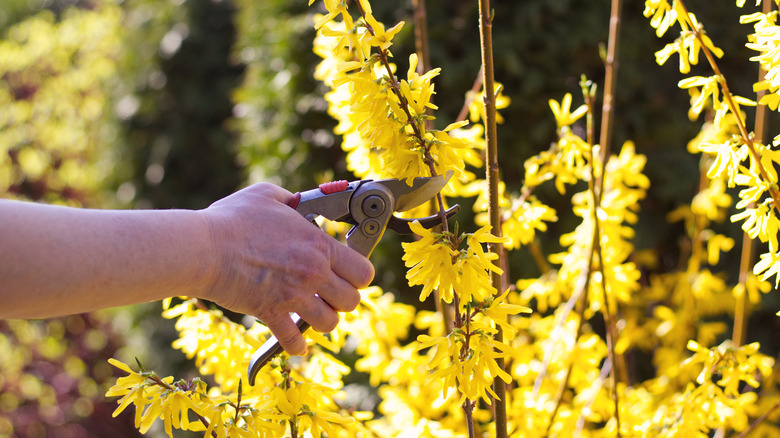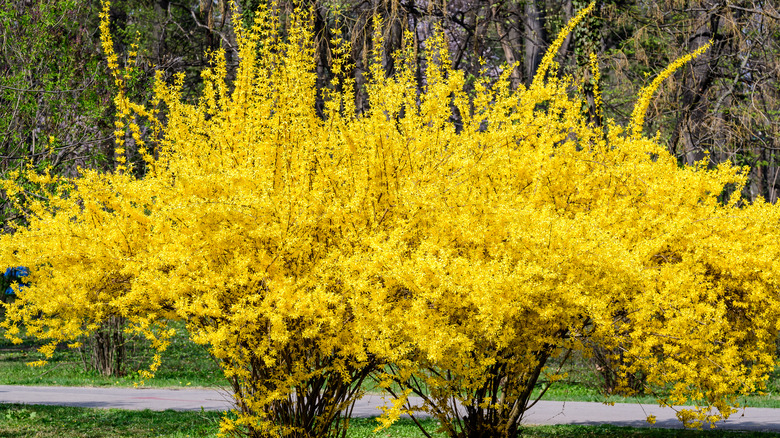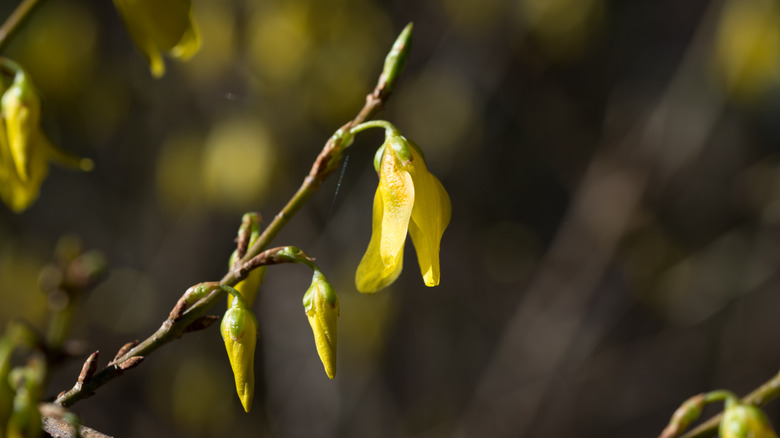Why You Should Be Careful Pruning Your Forsythia Shrub In Summer
The forsythia is known for its bright yellow flowers signaling an end to the dark days of winter and calling in the spring. This shrub can be shaped and maneuvered to fit the style of your garden, but looks best when left to grow naturally with regular maintenance. If it becomes overgrown, the shrub's branches become straggly and, like an unruly teenager, defy most attempts to be tamed.
But pruning the forsythia isn't as cut and dry as you would think. There's a wrong and right way to do it that can either leave you with a forsythia thriving with floral abundance in the spring or a lackluster, meatball-shaped bush. Before you pull out any of your must-have gardening tools, it's important to understand why you need to be careful pruning the forsythia in the summer, how to properly prune the shrub to maintain it, and what you can do to course-correct a neglected shrub. By the time summer rolls around, it's often too late to prune back the shrub without putting next spring's growth at risk.
The problem with pruning forsythia in the summer and what to do instead
Procrastinators proceed with caution. There are some mistakes to avoid making with the early blooming forsythia and waiting until the summer to prune it is one of them. Summertime is when the plant's new buds start to develop for next spring so cutting forsythia from the summer, onward, will ultimately lead to reduced flowering and a sad looking shrub.
Instead, to prune the forsythia while optimizing for new growth, remove one-third of the oldest branches shortly after the shrub is done flowering and definitely before mid-July. The following year, remove half of the oldest branches and by the third year, remove the remaining ones. If the shrub is extremely overgrown and contains mostly older branches, their chances of producing viable flowers is also greatly reduced. This is why pruning on time is critical to having a flourishing forsythia. It's a great way to maximize blooming for next year by allowing new growth and buds to establish.
How to prune an overgrown forsythia so it flowers again
If life does happen and your forsythia becomes a neglected nest of old, straggly branches that refuses to bloom, fortunately, it's not a lost cause. There is a best way to tame your overgrown shrubs so you can still be hopeful it produces flowers in the years to come. Pruning can be a worrisome task for gardeners, but the good news is the forsythia's branches grow back quickly.
To restore an overgrown forsythia to its former glory, cut back the plant within 4 to 6 inches of the ground in late winter or early spring. New flowers should bloom in one to two years. As tempting as shearing the entire bush may sound, you don't want to do this because this method won't remove old growth. It will just trim the growth down. Rather, you want to thin out branches, cutting close to the ground to encourage new shoots to grow from the base. This new growth will eventually lead to new buds and thus, new flowers in the following seasons.


